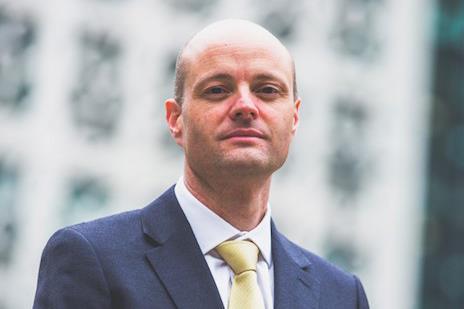Rather than procedural change to drive the illusion of improvement, we should completely re-assess what planners need to be doing, argues Paul Smith
After spending almost a year considering responses to their proposed changes to national planning policy, the government has decided that one of the key lessons for improving our planning system – and increasing the supply of new homes – is for planning decisions to be made faster.

One of the first targets is “extension of time” agreements, the process whereby applicants agree with the local authority that they can have longer than the statutory eight weeks (or 13 for major applications) in which to make a decision.
Use of such agreements has grown rapidly in recent years. While 88% of major applications are decided within the “agreed” time period, fewer than one in five are decided within 13 weeks.
To speed things up, the government intends to impose restrictions on when extensions of time can be agreed, and how often that can happen for a single application. Performance league tables will also be produced, highlighting best practice but also naming and shaming poor performers.
Your initial reaction might be to think that this is a good thing, but we need to be careful what we wish for.
Rather than continue to discuss complex proposals with applicants, there will be a strong incentive to simply refuse schemes 12 weeks and six days after they were submitted
It is the time to make a decision – not grant consent – that the government measures. A refusal is a decision too. Rather than continue to discuss complex proposals with applicants, there will be a strong incentive to simply refuse schemes 12 weeks and six days after they were submitted.
With the recent change to application fees meaning the fee is no longer waived for a re-submission, there is a financial incentive for local authorities too.
Pre-application advice is not a substitute for the discussions that can take place while an application is live. Not only are the comments non-binding, but it often also takes place without responses from consultees.
Nonetheless, diluting the ability to agree extensions of time for live applications may simply extend the time devoted to proposals at that stage, with applications reluctant to submit but everything is agreed. That does not speed up the decision; it simply moves the delay to somewhere it is not measured.
One of the key reasons why the application process takes so long is the reliance on comments from statutory consultees. Many are other council departments, as thinly stretched and as under-resourced as their colleagues in planning.
Others are external bodies – such as the Environment Agency or water companies – over whom the planning department has little influence. If they do not reply in time, the application process often grinds to a halt.
The government recognises this and is reviewing the whole statutory consultee system.
This is entirely welcome and long overdue but, again, we need to be alert for unintended consequences. Taking the lack of a response “as a green light, rather than a red one,” as Michael Gove put it, might sound alluring. But, in reality, it could simply lead to a default objection rather than a default holding response, as consultees look for a way of preventing a scheme from going ahead before they have fully considered it.
Efforts to improve our creaking planning system are always welcome, but these proposals to speed up decision-making miss an awkward fact – for most planning applications, 13 weeks is not actually that long.
>> See also: Key takeaways from Gove’s big planning speech
>> See also: Reforming planning: one way to solve the housing crisis
>> See also: The revised planning framework is not as bad as feared - but don’t thank Gove
Little can happen in the initial 21-day consultation period. Reports to planning committee usually need to be published at least a week before the meeting, with the week before that needed to write the report and secure the internal sign-offs necessary for it to appear on the agenda.
That reduces the effective period for dealing with the application – reading consultation responses, asking applicants for amendments, making changes to layouts and reports or securing additional evidence, considering (and perhaps re-consulting on) those amendments – to just eight weeks.
The planning system is being asked to deal with more and more issues, many of which – like nutrient neutrality - are effectively making good for failings in other parts of the public sector
Over recent years, the complexity of applications has increased dramatically. Every planning “reform” heaps more responsibilities on planners without anything ever being taken away.
The planning system is being asked to deal with more and more issues, many of which – like nutrient neutrality – are effectively making good for failings in other parts of the public sector. The most recent changes call for planning officers to spend extra time considering layout and design, to ensure more “beautiful” developments – a noble, but time-consuming, endeavour.
The unpalatable truth is that 13 weeks is unlikely to be enough, even without the hollowing out of our planning departments that has occurred as council budgets have become increasingly strained.
If we really want to speed up decision making, we need more than just procedural changes – and especially changes that will result in the illusion of improvement while the situation deteriorates in reality. Instead, we need a wholesale reassessment of what planning officers really need to be doing, what responsibilities can be taken away from them – and from the planning system – altogether, and how long that should take. And then give them the money to deliver it.
Paul Smith is managing director at the Strategic Land Group



























No comments yet